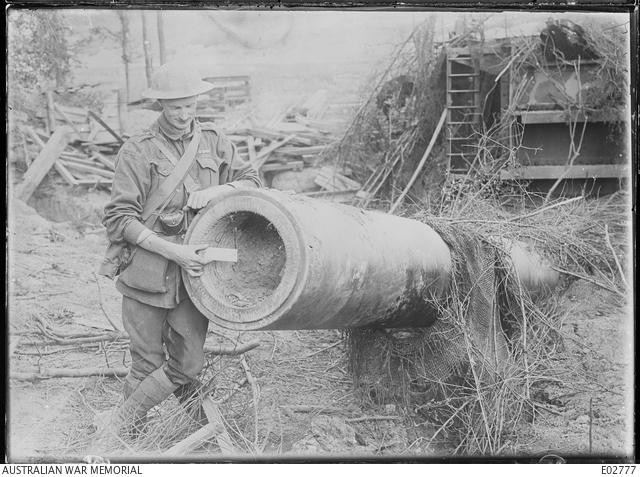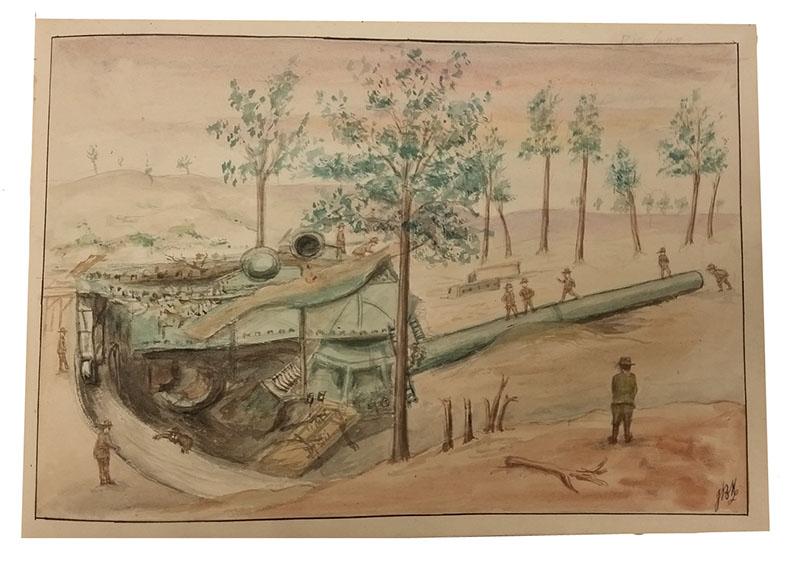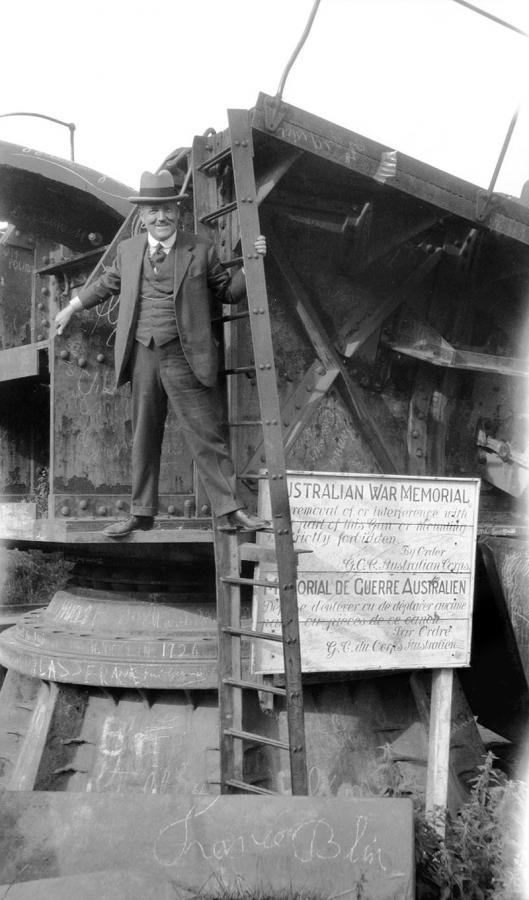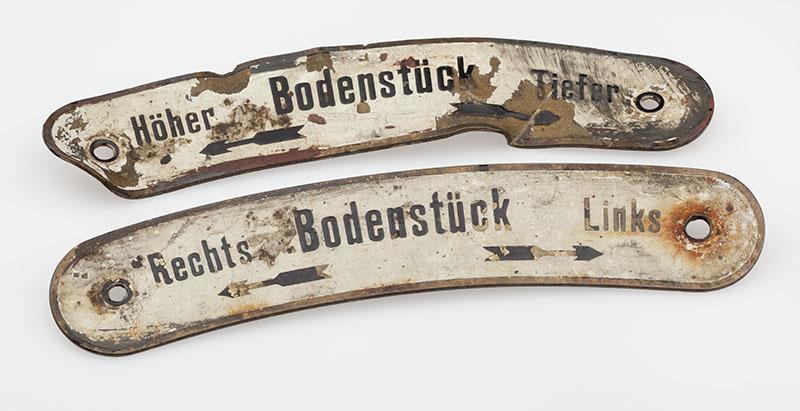Australia’s largest single war trophy
Running in a southerly direction from the Somme River is a series of gentle tributary valleys, scattered with small forests and villages. On Friday 23 August 1918, one of these valleys, near the town of Chuignes, was densely held by German troops and artillery, and represented a major obstacle to the advance of the allied armies as they pushed eastwards. Attacking at dawn, the First Division AIF, supported by the British 32nd Division, by day’s end had possession of the valley, as well as 21 captured artillery pieces and 3,100 prisoners.

In Arcy wood on the eastern side of the valley, troops of the 3rd Battalion AIF came across a destroyed artillery piece, a 38-cm Schnellade Kanone L/45 (quick-loading cannon). Built by the armaments firm Krupp for the Greek cruiser Basileos Gheorgios, it had been requisitioned by the Germans at the start of the war. With a calibre of 38 cm, a barrel length of 17 metres, and a maximum range of 46 kilometres, it was far larger than any enemy gun the Australian soldiers had yet encountered, and quickly became an object of soldierly fascination and visitation. The Germans had spent considerable effort emplacing the weapon, as it required the construction of a double railway track to the site to transport the gun, and a 40-tonne crane to help erect it. The barrel was mounted on a steel carriage which rotated at its forward end in a massive steel pivot. The rear of the carriage moved on a 17-metre diameter toothed arc, allowing different targets to be acquired. The entire assembly was built onto a 17-metre diameter concrete foundation weighing 600 tonnes. Burrowed into the hillside near the gun were tunnels accommodating shells, cartridges and the electrical operating machinery that trained and elevated the gun.

Watercolour sketch by Sapper J B Meldrum of the 5th Field Company Australian Engineers
First brought into action on 2 June 1918, the gun had fired 385 rounds by 9 August. Most of these were directed at the city of Amiens, 29 km distant. On 9 August, fearing the site was to be over-run, the Germans decided to destroy the gun, lest it fall into allied hands. When captured by Australian soldiers, they found that the barrel had been tamped with soil and an explosive charge had burst the chamber and shattered much of the carriage. General Monash considered it to have been the largest single trophy won by any commander during the war, considerably larger than the 28-cm railway gun captured at Harbonnières the same month; he regretted that it would be too expensive to transport it to Australia. While the gun rested in Arcy Wood for many years as “the Australian War Memorial”, a number of small parts of the gun were nonetheless brought home and are now preserved in the present War Memorial’s collection, together with photographs, postcards and watercolours.

Sir Arthur Rickard, a member of the Australian delegation to the League of Nations General Assembly, visiting the gun in 1926.

Cleaning rod from the Chuignes gun

Plates taken from the gun, relating to the lifting of a floor piece.
Read more about 1918 in Wartime issue 82. Purchase a copy here, or subscribe from $36.